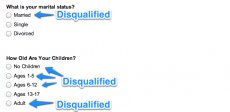
2) Decide on What You Can Afford to Spend
Marketing professionals are no stranger to budgets, and budgets generally dictate the type of marketing programs that we can run. This is no different for planning online promotions, where we must work within our budget in order to predict both the cost of running the promotion (both redemption costs, media buying and agency fees) and the results we expect to see.
While there is no hard and fast rule to budgeting for a promotion, the following numbers will likely factor into your online promotion planning:
- Size of Target Audience – How big is your target?
- Audience Participation Rate – What percentage of the audience will actually engage with your promotion?
- Promotion Redemption Rate – How many will actually redeem your promotion or coupon in a store? Use your traditional redemption rates as a baseline
- Audience Distribution and Media Costs – While distribution costs of digital promotions are relatively inexpensive, if you do purchase online or offline media for the promotion, there will be a cost associated
- Agency Fees – How much will it cost for creative elements of your promotion, landing pages, third party distribution and redemption services, etc.?
Now fit all of these fees into your budget to determine what you can afford with your online promotion.
3) Know Your Target Audience
Target audiences are another obvious element of advertising and marketing that can be completely overlooked when planning a promotion. If your target audience is single mothers with teenage sons, then do your homework to understand how many mothers are in this segment. What are their demographics? Where do they live? What car do they drive?
 The more information you can gain on your audience, the better your chances of having a successful promotion. Utilize your existing market research or conduct a new study before launching your promotion.
The more information you can gain on your audience, the better your chances of having a successful promotion. Utilize your existing market research or conduct a new study before launching your promotion.
4) Understand Your Potential Promotion Audience
In example #3, we mention a very specific target audience that represents a small segment of the overall population. That does not mean that these are the only people who would participate in your online promotion. In fact, you may find that your potential promotion audience is much larger than you think – often 10x to 1000x larger than your niche segment.
What happens if your promotion happens to appeal to an unintended audience? This will eat away at your budget and prevent you from fully reaching your potential audience.
You can prevent this by establishing clear messaging to your intended audience, verifying attributes about your audience prior to redemption and establishing guidelines for what makes someone eligible to participate in the promotion. While you will never be able to enforce this 100%, you can limit your risk by being very clear with who you are intending to target and verifying attributes about the audience.
A non-offensive way to do this is to ask a set of questions in the submission form and then filtering eligibility based on how they answer these questions. For example, you may find your target audience by simply asking 2 questions on the entry form:
5) Plan your ROI
While a promotion may not have the objective of attaining an immediate return on investment (ROI), at some point your organization will need to know if the promotions you run make money in the long run. Plan your ROI by finding the following numbers:
- Promotion Cost – How much will the promotion cost per person who signs up?
- Short Term Revenue – How much money do we make off the promotion? i.e. revenue from Promotion items sold
- Long Term Customer % – How many of these people will become long term customers?
- Customer LTV – What is the life time value (LTV) for a long term customer?
With these numbers, you can establish an expected ROI of your promotion fairly easily by using the formula of:
ROI = ((Short Term Revenue – Promotion Cost) + (Long Term Customer % * Customer LTV)) / Promotion Cost
Let’s say that Promotion Cost is $5, short term revenue is $8, 20% of customers become long term buyers and Customer LTV is $30. Putting these numbers into the equation, we get:
ROI = (($8 – $5) + (20% * $30)) / $5 = 180%
In this case, we received a 180% ROI for running this promotion.
6) Establish a Limit of Redemptions
Establishing a limit to how many people can redeem your promotion is paramount to the perceived value of your promotion. Part math, part science, part estimation, your redemption limit will be a key indicator to how long your promotion can run and when you will run out of inventory available.










